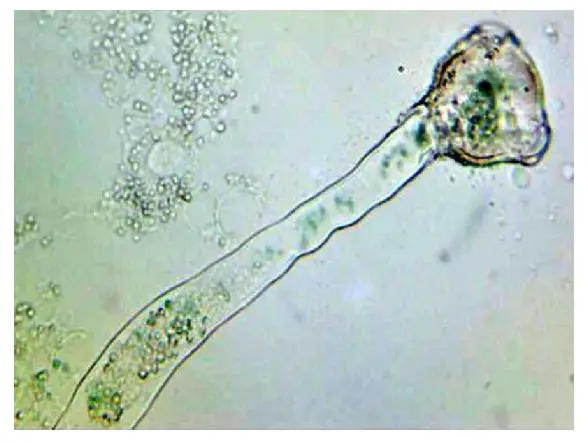If you’re unfamiliar with the terms zooidogamy and siphonogamy, you may be wondering what the difference is between the two. This blog will explain the key differences between zooidogamy and siphonogamy, and how they are used in different contexts. We will look at the definitions of both, their advantages and disadvantages, and how they are used in various scientific fields.
So, let’s dive in and uncover the difference between zooidogamy and siphonogamy.
Comparison of zooidogamy and siphonogamy

The differences between zooidogamy and siphonogamy are often misunderstood, but they are actually two distinct forms of reproduction. Zooidogamy is the process in which a single zooid produces both eggs and sperm and fertilizes its own eggs.
Zooidogamy is a form of self-fertilization, while siphonogamy is a form of cross-fertilization. As a result, zooidogamy can result in offspring that are genetically identical to their parent, while offspring resulting from siphonogamy are genetically distinct from either parent.
Zooidogamy vs siphonogamy

Zooidogamy and siphonogamy are two methods of plant reproduction that are quite different from one another. Zooidogamy is a type of cross-pollination in which the pollen of one plant is transferred to the stigma of a different plant. This process is usually done by wind, birds, or insects.
This process is usually done by wind, birds, or insects. Siphonogamy, on the other hand, is a type of self-pollination in which the male and female parts of the same plant come into contact and fertilization takes place. Unlike zooidogamy, no external agents are involved in the process of siphonogamy.
While both methods result in the production of viable offspring, zooidogamy helps to introduce genetic diversity into the population while siphonogamy is a way of ensuring the continuity of existing genetic material.
Pros and cons of zooidogamy
Zooidogamy and siphonogamy are two different types of reproduction which have different advantages and disadvantages. Zooidogamy is the process of sexual reproduction between two cells of different types, whereas siphonogamy is the process of sexual reproduction between two cells of the same type.
Zooidogamy is the most common form of reproduction in plants, and it allows for genetic diversity and adaptation of the species. On the other hand, siphonogamy is less common and is mainly used in unicellular organisms, such as bacteria, where genetic diversity is not essential. A key difference between zooidogamy and siphonogamy is that in zooidogamy, the two cells involved in the process are of different types and so they can swap genetic material, whereas in siphonogamy, the two cells involved are of the same type and so they cannot.
This means that zooidogamy allows for greater genetic diversity and adaptation of the species, while siphonogamy is more limited in this regard. Another difference between zooidogamy and siphonogamy is that in zooidogamy, the two cells involved must be close together, while in siphonogamy, the two cells can be far apart.
In conclusion, zooidogamy and siphonogamy are two different types of reproduction which have their own advantages and disadvantages. Zooidogamy allows for greater genetic diversity and is more efficient, while siphonogamy is more limited in this regard and is mainly found in unicellular organisms.
Pros and cons of siphonogamy
Siphonogamy is a type of reproduction in which the male gamete is transferred from one organism to another through a tube or siphon. This is different from zooidogamy, which is a type of reproduction in which the male gamete is transferred directly from one organism to another without the need for a tube or siphon. The main difference between the two types of reproduction lies in the way the male gamete is transferred.
The main difference between the two types of reproduction lies in the way the male gamete is transferred. In zooidogamy, the male gamete is transferred directly from one organism to another, whereas in siphonogamy, the male gamete is transferred through a tube or siphon. The main benefit of siphonogamy is that it allows for a greater degree of control over the transfer of the male gamete.
This is beneficial because it allows for greater accuracy in the transfer process and reduces the chance of contamination. Additionally, it can also be beneficial in situations where the two organisms are not in close proximity.
It is more difficult to establish and maintain a connection between the two organisms, as the tube or siphon must be regularly monitored and maintained. Additionally, it can be difficult to ensure the accuracy of the transfer process, as the tube or siphon may become blocked or contaminated, resulting in a failed transfer.
Overall, while there are both benefits and drawbacks to the use of siphonogamy, it is a useful method of transferring the male gamete from one organism to another. It is important to consider both the pros and cons of siphonogamy when deciding whether or not it is the best method for a given reproductive situation.
Examples of zooidogamy and siphonogamy
Zooidogamy and siphonogamy are two types of sexual reproduction in plants. The main difference between them is the way they transfer pollen from one plant to another. In zooidogamy, the pollen is transferred from one plant to another by an animal such as a bee, bird, or other insect.
In siphonogamy, the pollen is transferred from one plant to another through a mechanism called a “siphon. ” This is a tube-like structure that is filled with a liquid and has a small opening at one end.
The pollen is drawn into the tube and then released into the other plant. Zooidogamy is more common in flowering plants, while siphonogamy is more common in non-flowering plants.
Final Touch
In conclusion, zooidogamy and siphonogamy are two distinct methods of fertilization in various organisms. Zooidogamy involves direct transfer of sperm from one individual to another, whereas in siphonogamy, sperm are drawn up from the water by the female.
Zooidogamy is a method of fertilization that is seen in some species of fish, amphibians, and reptiles. Siphonogamy, on the other hand, is mainly found in some species of mollusks and crustaceans. Each process has its own distinct set of advantages and disadvantages, and they are both important to the reproductive success of many organisms.

